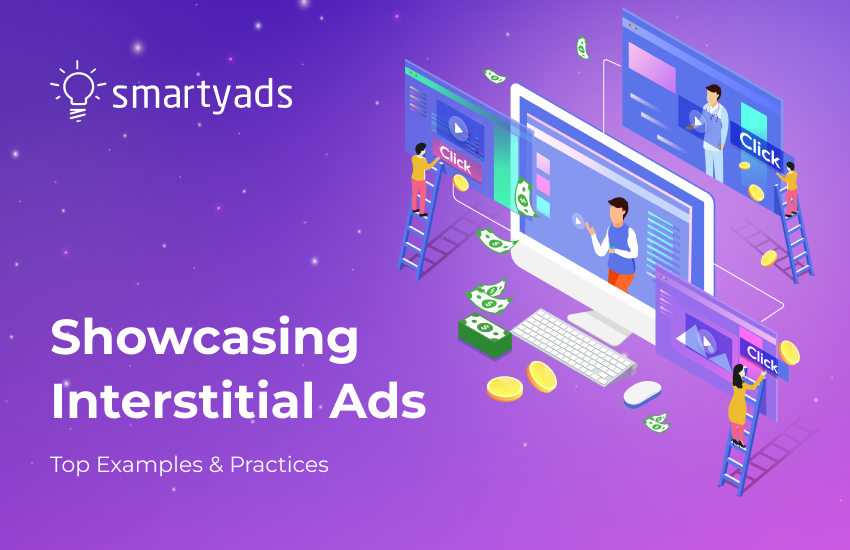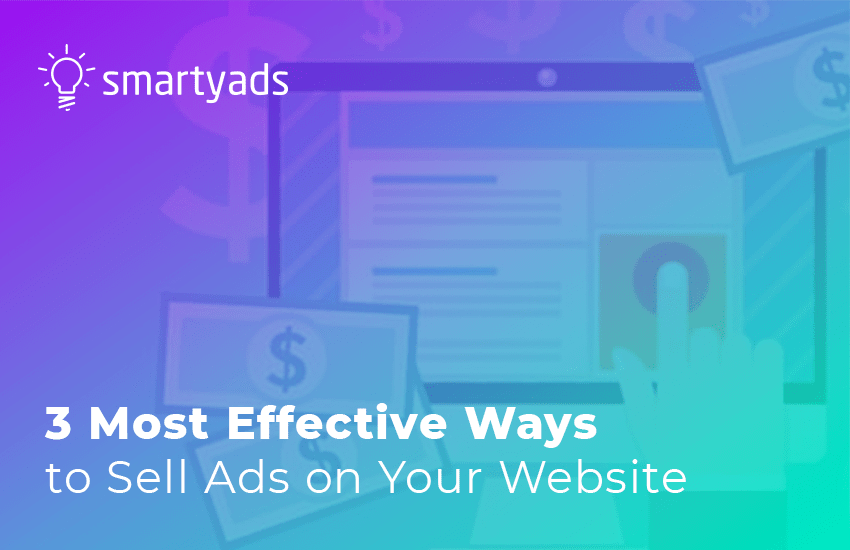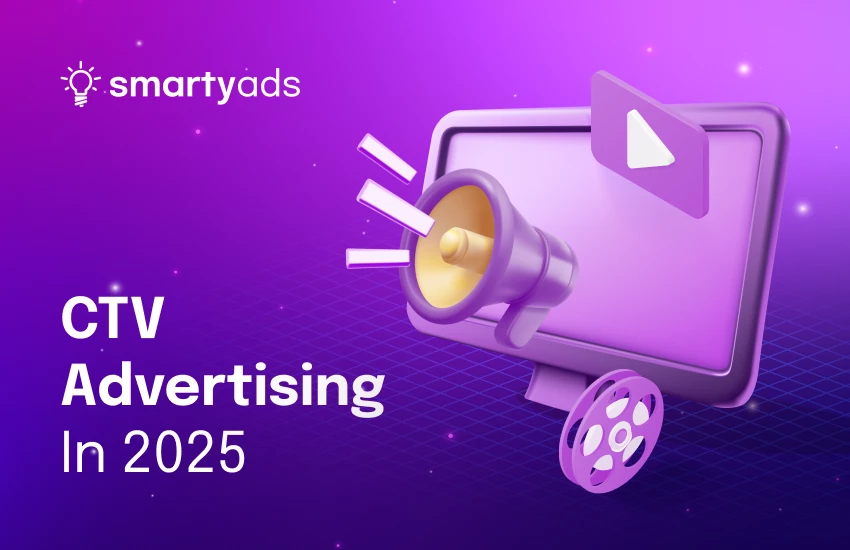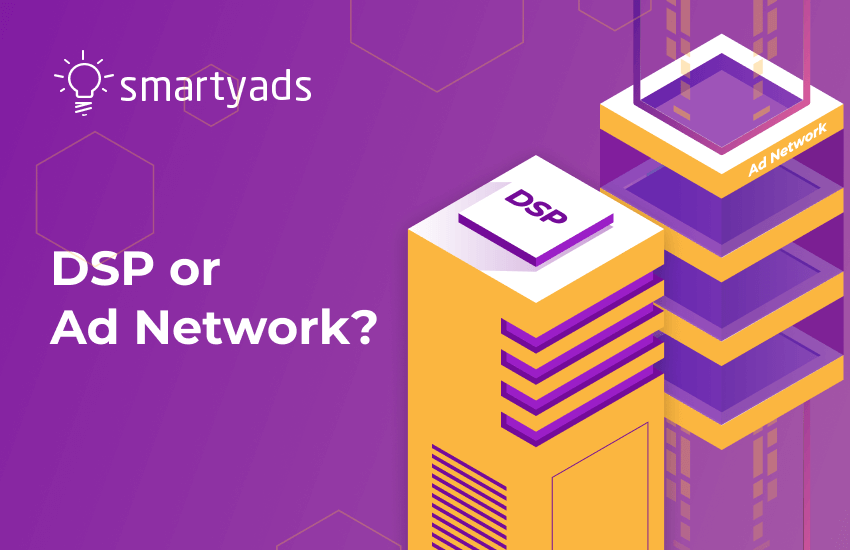Imagine walking through a captivating art gallery, enjoying each artwork at your own pace. Just as you’re about to lose yourself in the art, a large poster suddenly unfolds, blocking your view and demanding your attention.
This unexpected interruption disrupts the peaceful ambiance of the gallery, leaving you caught between the art you were admiring and this unwelcome distraction. In the digital realm, these disruptive moments are analogous to interstitial ads, and we’re going to explore their impact, creativity, and how to use them effectively in online advertising.
Key Takeaways:
- Interstitial Ads are full-screen ads that appear between content pages or transitions, typically in mobile apps, websites, and games.
- Types of Interstitial Ads include full-screen ads, video interstitials, interactive formats, exit-intent ads, and mobile-specific ads. They are designed to grab attention at key moments, such as between levels in games or page transitions.
- Benefits include higher visibility, increased revenue potential, and enhanced targeting capabilities.
- Best Practices suggest showing interstitials at natural pauses, using event tracking for optimal placement, and A/B testing to find the most effective ad frequency and placement.
- SmartyAds DSP offers a platform for integrating and optimizing interstitial ads through programmatic solutions, ensuring effective monetization and targeting.

What are interstitial ads?
Interstitial ads are a special type of online advertising that show up between two content pages, usually as full-screen overlays or pop-ups. Their primary purpose is to catch the user's eye and convey a message or promotional offer before letting them access the content they were trying to view. These ads are especially prevalent on mobile devices and can take on various formats, such as promotional messages, video clips, or subscription requests.
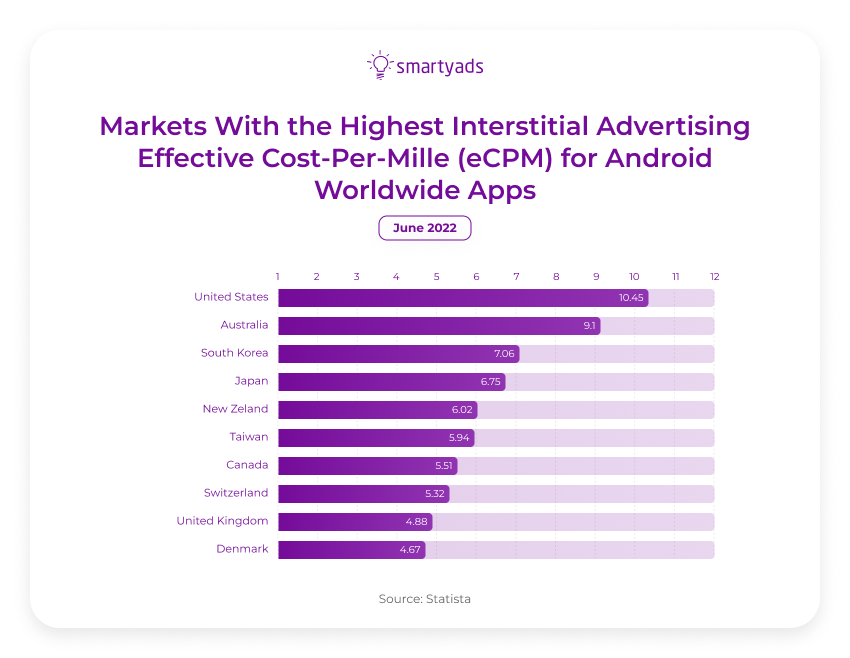
How Do Interstitial Ads Work?
Interstitial ads play a unique role in our online experiences by acting as brief interruptions. You’ve probably noticed them popping up at convenient times—like when you’re moving between levels in a game, switching pages on a website, or about to access premium content. They hit pause on what you’re doing, grabbing your attention completely. With eye-catching visuals, catchy messages, and interactive elements, these ads encourage us to take a step, whether it’s clicking a link, signing up for something, or making a purchase.
The Benefits of Interstitial Ads
Diversify Your Ad Offer
With interstitial ads, you have a lot of options. Whether it’s eye-catching images, engaging videos, or interactive elements, there’s plenty of room to mix things up and find what works best for your audience.
High Revenues
One of the biggest perks of using in-app interstitial ads is their impressive earning potential. They typically generate much higher effective CPMs compared to traditional banner ads. In fact, interstitial ads on desktop can outperform banner ads by a staggering 5,173%. That’s a game-changer for anyone looking to boost their revenue!
Maximum Visibility
Since interstitial ads take over the entire screen, they really grab users’ attention. This means better engagement and higher click-through rates, as users are less likely to miss them compared to smaller ad formats.
Flexibility Across Platforms
Another great thing about interstitial ads is their versatility. You can use them effectively on mobile apps, websites, and even games. This makes them a go-to option for both publishers and advertisers.
Enhanced Targeting
What’s more, interstitial ads give the possibility for tailored messaging at just the right moments—like during transitions or pauses in content. This improves the relevance of the ads, leading to increased user engagement.
Effective Storytelling
The full-screen format is perfect for storytelling. Advertisers can create immersive brand experiences that resonate more deeply with audiences, allowing them to connect with the brand in a meaningful way.

Types of interstitial ads with examples
Full-Screen Interstitials
Full-screen interstitial ads pop up and take over your entire screen, usually when you’re moving from one piece of content to another. They’re hard to miss and really grab your attention, making them quite engaging. When these ads are placed at natural transition points in mobile apps and websites, they can actually enhance your experience instead of feeling disruptive. It’s all about creating a seamless flow that keeps you interested without pulling you out of what you’re doing.
For example, when using the Booking.com app to search for accommodations, you may encounter full-screen interstitial ads offering discounts on flight bookings or showcasing dreamy vacation destinations like "Save 15% on Your Next Getaway."
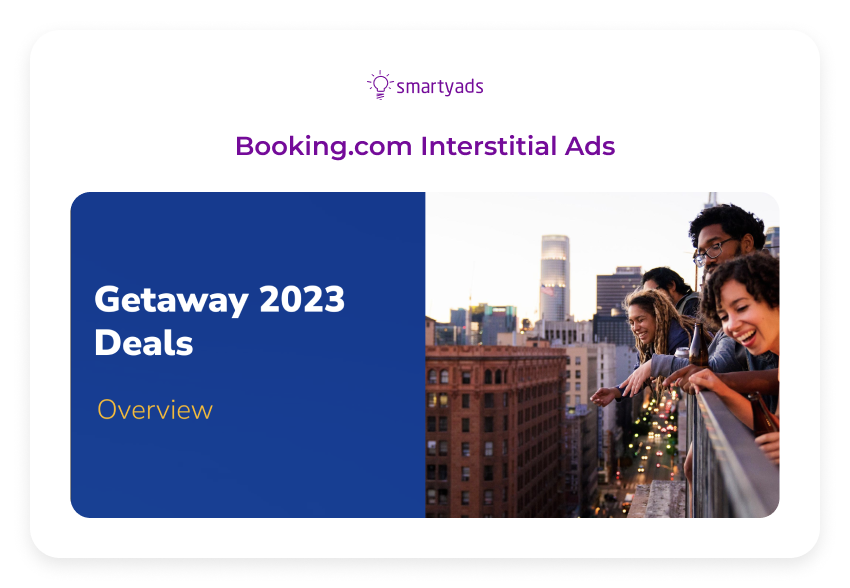
Video Interstitials
Interstitial video ads use short video clips to convey messages or promotions. For instance, YouTube displays interstitials that play before a selected video, showcasing movie trailers or product advertisements.
These ads can range from showcasing upcoming movie trailers and product launches to educational content. For instance, when you're about to watch a travel vlog, you might see a brief interstitial ad for a travel booking website or a video game teaser.
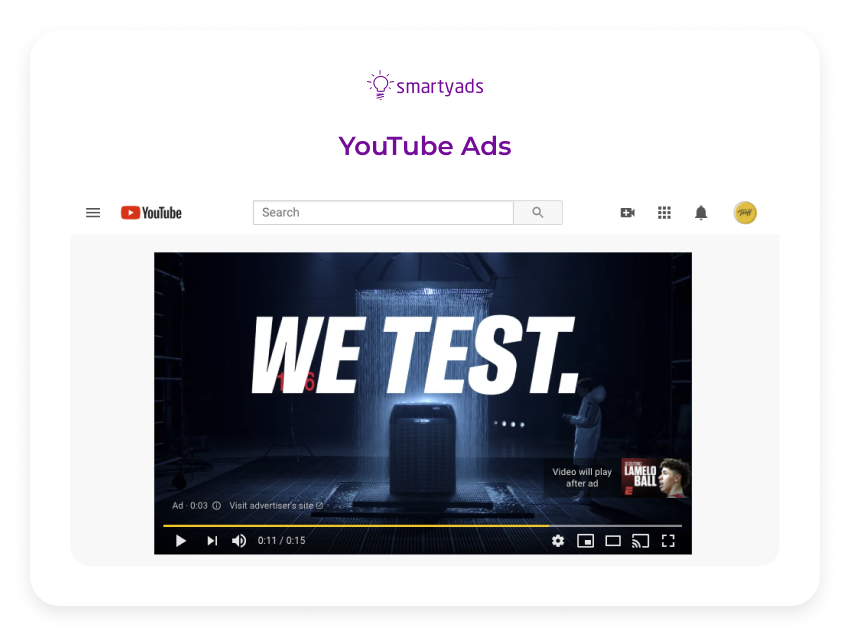
Interactive Interstitials
These ads encourage user engagement. Advertisers can integrate interstitial ads on a news website, where users can interact and provide feedback while the site gathers valuable data.
Interactive Interstitials are a dynamic form of advertising that thrives on fostering user participation and engagement, offering an innovative approach that goes beyond mere ad display.
These ads are designed to provide a two-way communication channel, enabling users to actively participate and provide feedback while the platform simultaneously gains valuable insights.
SurveyMonkey, an online survey platform, often uses Interactive Interstitials to collect user feedback and engage their audience. When you visit their website, you might encounter an Interstitial that invites you to participate in a short survey.
These surveys could be about various topics, such as user experience, product preferences, or current events. Here you can look at interactive advertising examples.
Engaging in the survey empowers SurveyMonkey with invaluable data that fuels service enhancement and provides valuable insights to their clientele. This interactive method not only collects data but also enriches user involvement, paving the way for customized services that cater to individual user needs.
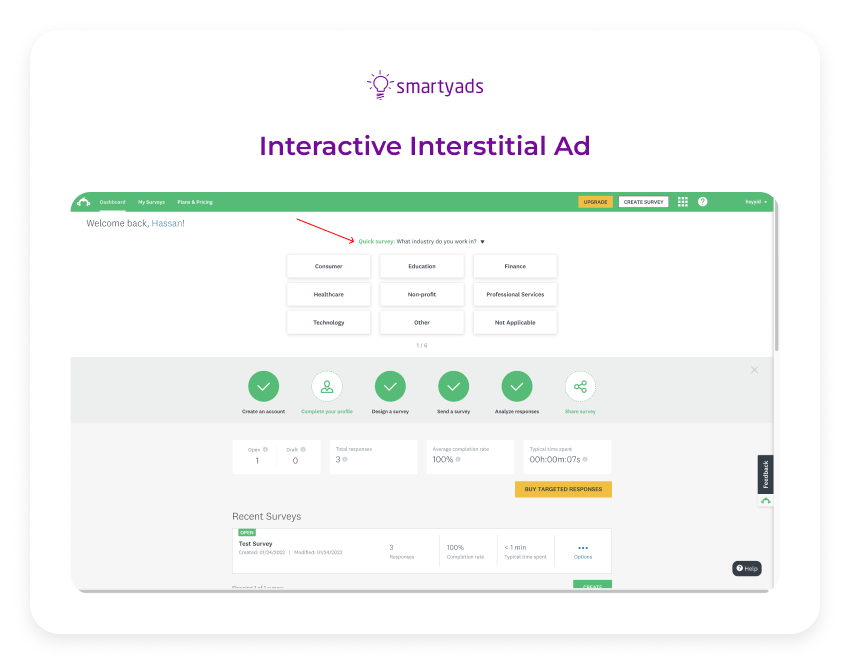
Exit Intent Interstitials
Exit Intent Interstitials are a clever marketing strategy that deploys pop-up banner ads just as a user is about to exit a webpage.
These interstitial ads work like the friendly shopkeeper who offers you an irresistible discount just as you're about to leave the store empty-handed. E-commerce websites, in particular, have harnessed the power of Exit Intent Interstitials to recapture wavering shoppers and increase conversion rates.
Imagine you're shopping online and adding a few items to your cart. However, something distracts you, and you decide to close the browser tab without completing the purchase. That's when Exit Intent Interstitials come into play.
Here's how they work:
Abandoning the Cart
As you move your cursor toward the close button or the back button, the Exit Intent Interstitial springs into action.
Last-Minute Offer
A well-designed pop-up appears, offering a last-minute incentive to stay and complete your purchase. This could be a discount code, free shipping, or a complementary product.
Decision Time
Faced with this tempting offer, you have to decide whether to proceed with your purchase or leave.
For example, the short pop-up ads on the Coursera website. This banner thanks the user for their visit, and the interstitial ad exit button asks if they can participate in a short survey. This type of interstitial ad works because it is an unobtrusive, interactive, user-friendlier experience for the user.
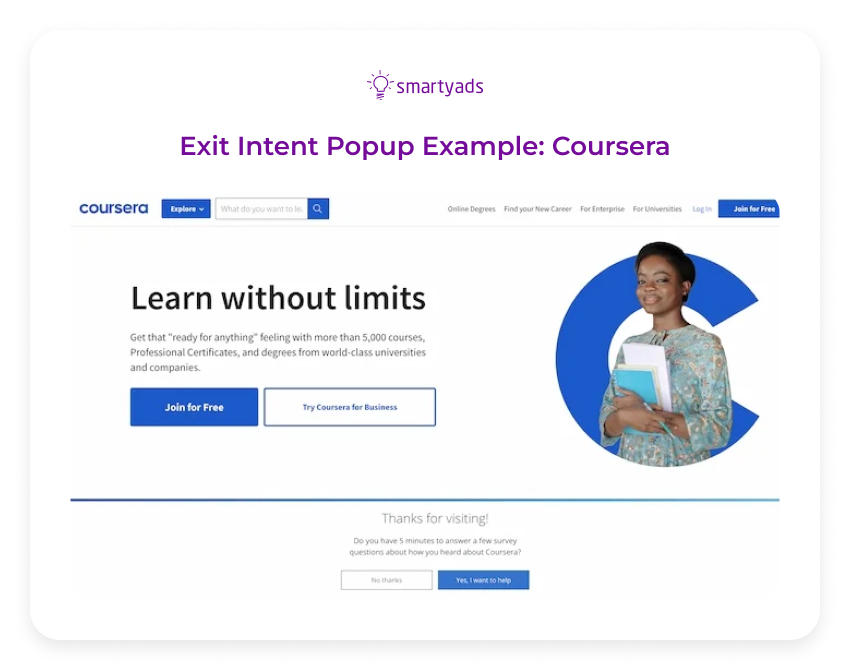
Mobile Interstitial Ads
Mobile apps often utilize interstitials as natural transition points. For example, a weather app might show an interstitial ad between updates, promoting a travel app. Additionally, these mobile interstitial ads can appear on mobile websites as transitional banners between different pages.
Mobile interstitial ads have become a common sight for smartphone users, particularly within apps. This type of advertising is strategically placed during smooth transitions, making it feel less intrusive and more acceptable to users.
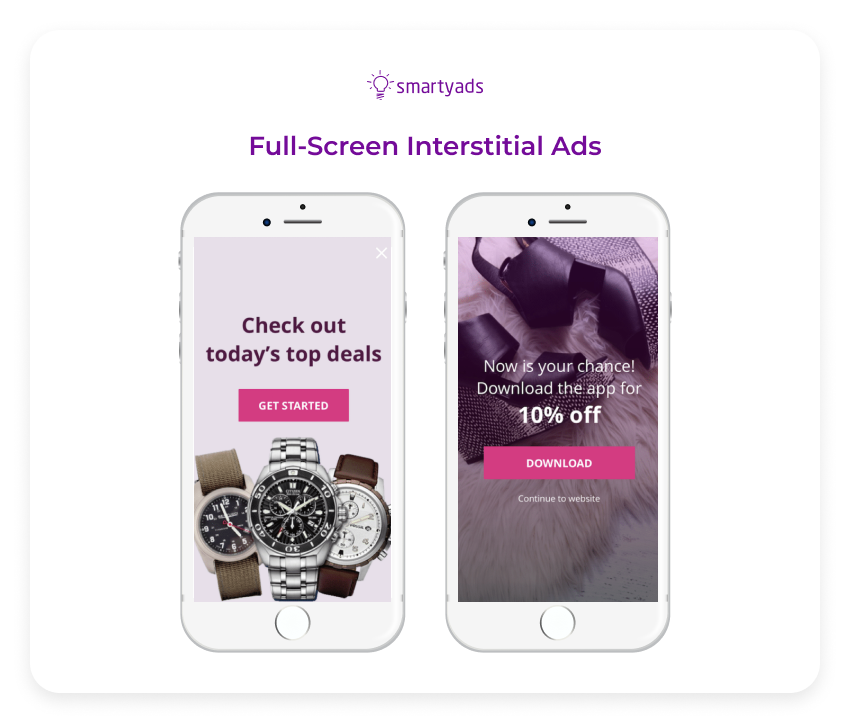
Interstitial Ads in Gaming
Interstitial Ads in the gaming world have become a common sight for players. These ads are strategically placed between game levels, transitions, or natural breaks, often offering rewards, promoting in-app purchases, or showcasing other games.
One of the most common uses of interstitial ads in gaming is to provide players with rewards. Imagine playing your favorite mobile game, and after completing a challenging level, an interstitial ad pops up, offering you in-game currency, extra lives, or power-ups in exchange for watching the ad.
Game developers frequently use interstitial ads to promote in-app purchases. For example, in Candy Crush, players might encounter an interstitial ad that tempts them with exclusive deals on power-ups, extra moves, or boosters. Banner ads are usually placed to capture players' attention when they might be seeking an edge in the game.
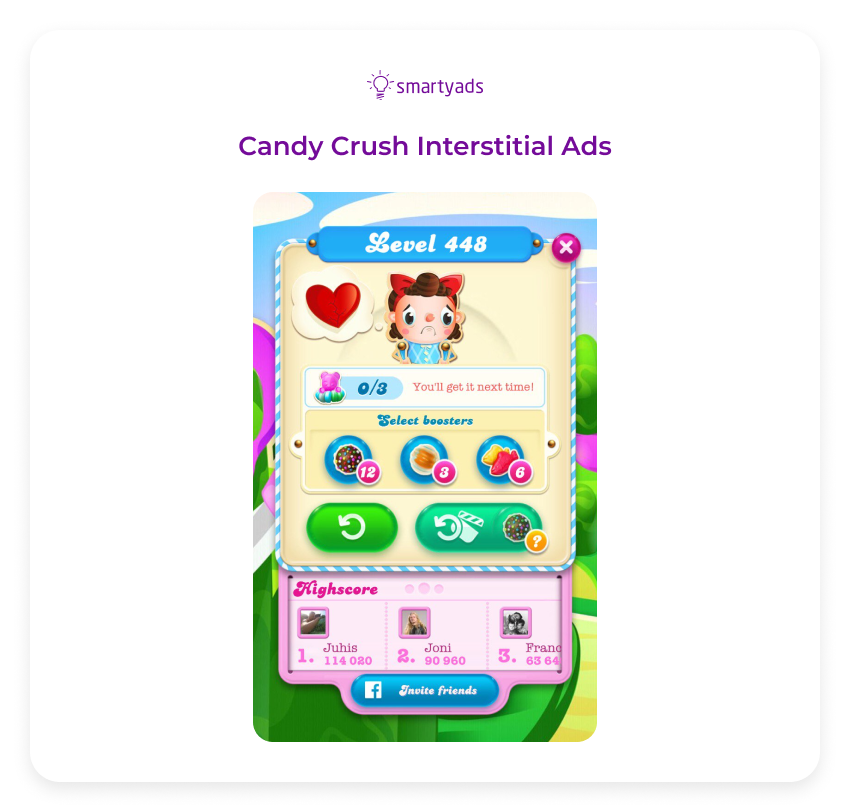
Interstitial ads also serve as a platform for cross-promoting other games from the same developer or gaming studio. When you're deeply involved in one game, an interstitial ad may introduce you to another game created by the same company, sparking your interest in a new gaming adventure.
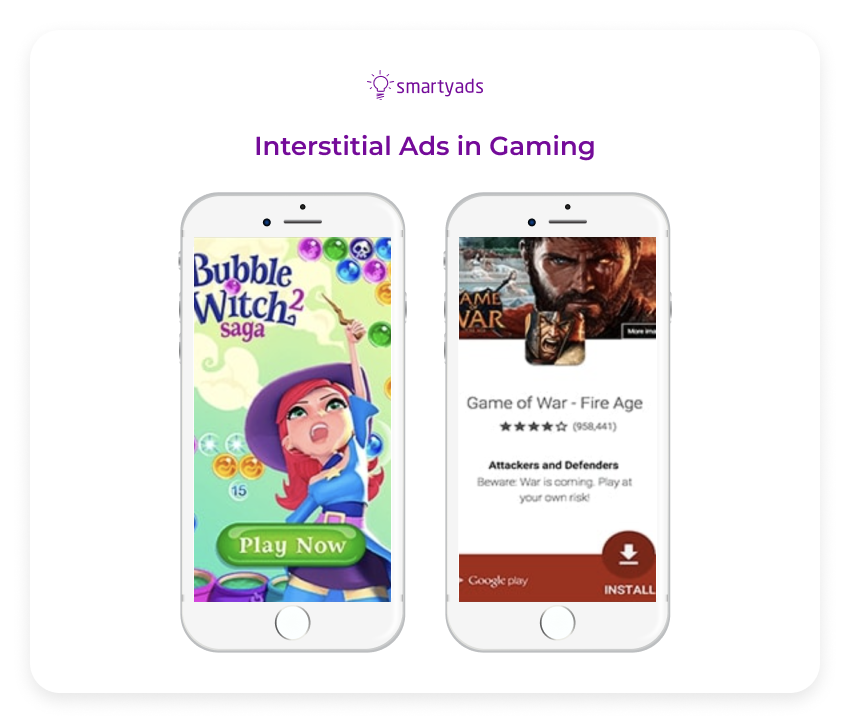
Interstitial Ads on Websites
Websites use interstitial banner ads to promote newsletter sign-ups, special offers, or featured content. When you visit a news site, you might encounter an interstitial ad for a premium subscription before accessing articles.
Many websites leverage interstitials to encourage visitors to subscribe to their newsletters. As you browse a blog or news website, you may encounter a full-screen interstitial prompting to enter your email address in exchange for the latest updates, articles, or exclusive offers.
This approach helps websites build subscriber lists and inform readers about new content.
For example, when visiting The New York Times website, you may encounter an interstitial ad encouraging you to subscribe to their premium digital content. This ad highlights the benefits of subscription, including full access to their articles and exclusive features.
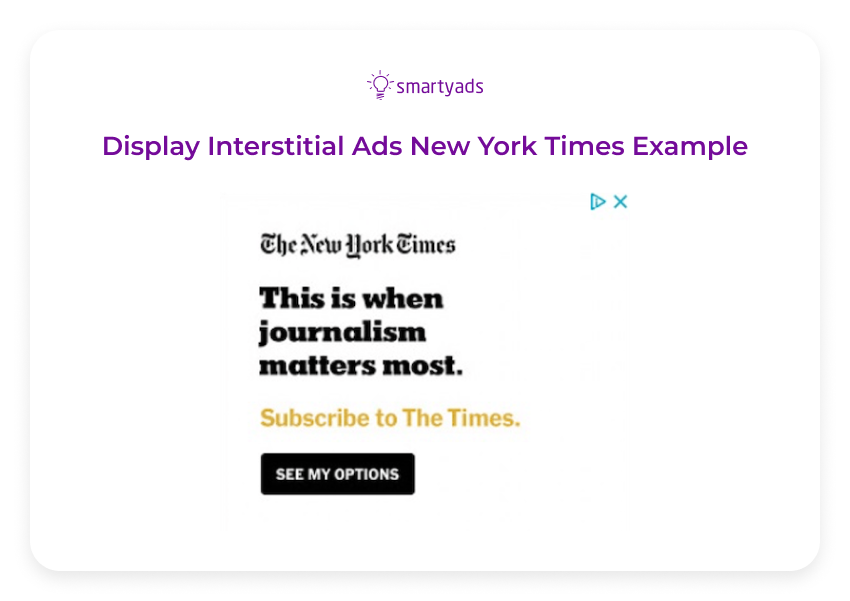
Interstitial Ads on Social Media
Instagram incorporates interstitial ads into users' stories. These immersive, full-screen ads can promote fashion brands or travel destinations.
Interstitial Ads on Social Media are a compelling way to engage users within the realms of their favorite platforms. These ads have gained prominence on various social media networks, offering users a unique and immersive experience.
One prominent interstitial ad example on Social Media is Instagram Stories. Instagram has seamlessly integrated interstitial ads within the Stories feature. These full-screen ads provide a captivating and immersive way to connect with users. Brands often use these ads to promote various products and services.
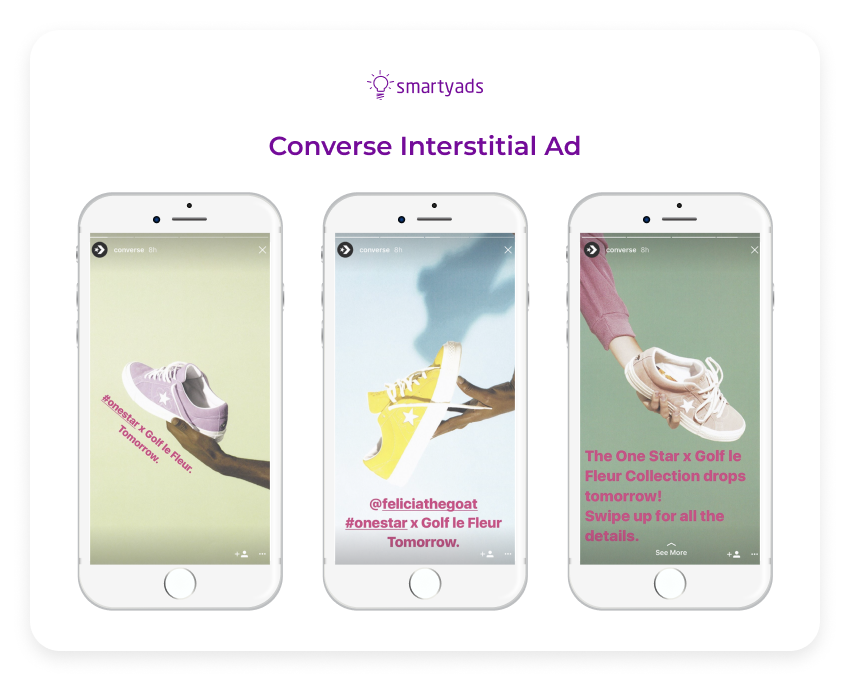
Snapchat
On Snapchat, the Discover feature incorporates Interstitial Ads to deliver engaging content. These ads can include interactive elements like games, quizzes, or augmented reality experiences. Brands use these ads to create a sense of immersion and interaction.
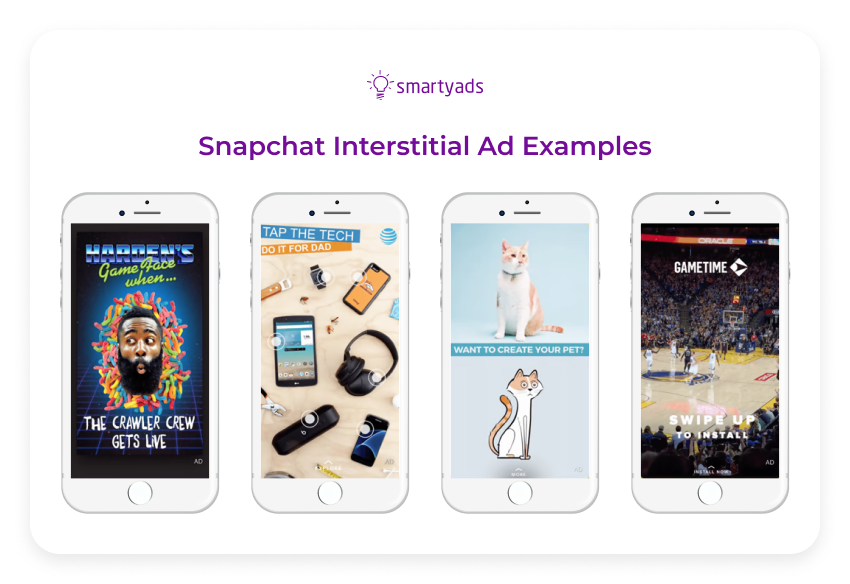
Interstitial Ads in Email
Email marketing employs interstitials as pop-up ads to announce webinars or exclusive promotions. For instance, a clothing retailer may use interstitial pop-up ads to showcase a limited-time sale.
Interstitial Ads in Email marketing have emerged as a dynamic tool to captivate the attention of readers within the realm of their inboxes.
This innovative approach adds a layer of interaction to email campaigns, effectively promoting webinars, exclusive offers, or other compelling content. Let's delve into the world of Interstitial Ads in Email and explore how they are creating a buzz in the digital marketing landscape.
E-commerce retailers find Interstitial Ads in Email particularly effective for promoting limited-time sales and exclusive offers. These interstitial pop-up ads can inform subscribers about special discounts or flash sales.
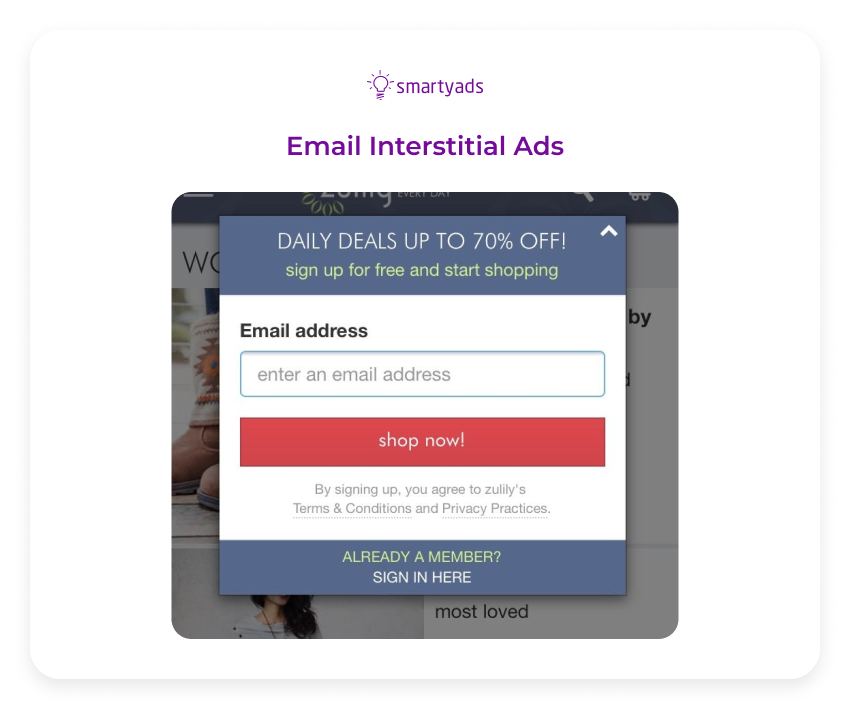
Interstitial Ads in Streaming Services
Interstitial Ads in Streaming Services have become a common sight for users indulging in their favorite TV series or movies. Streaming platforms, including heavyweights like Hulu and Netflix, strategically incorporate video ads to generate revenue and promote premium content or sponsors.
Though occasionally frustrating, these ad interruptions play an essential role in sustaining the availability of high-quality content on streaming services.
Interstitial video ads on streaming services are often used to highlight premium or exclusive content available on the platform.
For instance, if a streaming service has recently released a highly anticipated show or film, it may insert an interstitial ad that teases the content's storyline and showcases compelling snippets. This approach serves a dual purpose: it generates excitement among viewers and encourages them to watch the promoted content.
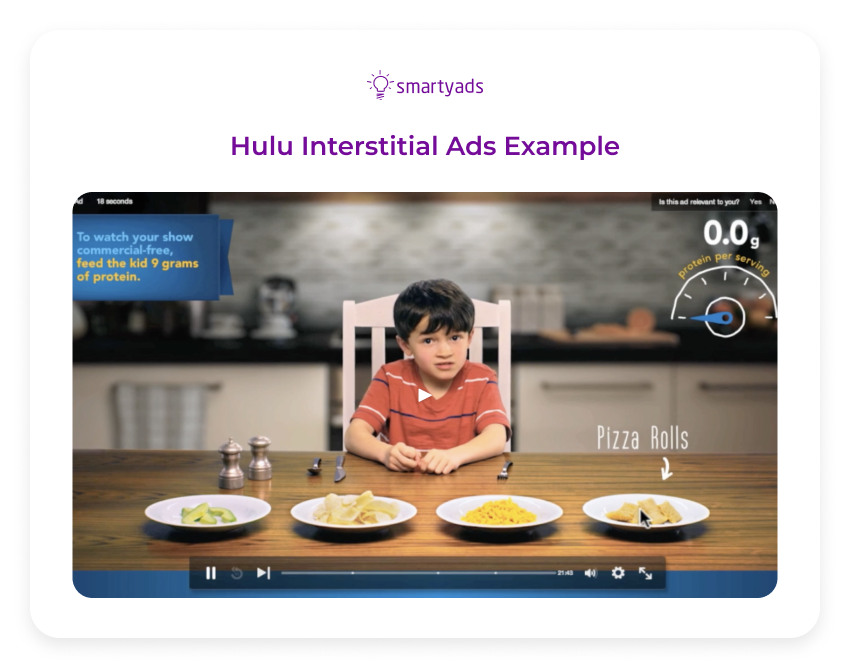
Streaming platforms employ advanced algorithms to manage the frequency and relevance of interstitial video ads. These algorithms consider user behavior, content preferences, and viewing history to ensure that ads are not overly intrusive and remain engaging.
Interstitial Ads Best Practices
Don’t Interrupt the Game Flow
When it comes to interstitial ads, timing is everything. It's best to implement them at natural pauses or critical moments in the game, like after a level is completed or when a session wraps up. Avoid interrupting users during app loading, exiting, or right in the middle of gameplay—these interruptions can really frustrate players and lead to a negative experience. Instead, think about placing interstitials between game sessions or right after finishing a level. This way, you keep the game flow smooth and give users a better overall experience.
Use Event Tracking to Find Optimal Interstitial Times
It's a great idea to use analytics tools to keep an eye on how users interact with your app. By tracking things like when they open the app, browse menus, play games, or even exit, you can gather valuable insights. This information can help you figure out the perfect times to show interstitial ads. By understanding what users are doing, you can better time and place your ads, ensuring they don't disrupt the experience too much and actually engage users.
A/B Test Interstitial Placement
The way you place interstitial ads is really important for both keeping users happy and making money. It’s a good idea to run A/B tests to try out different ad placements and see how they perform. Look at metrics like how many ads each player sees, how well they’re sticking around, how long they’re playing, what actions they’re taking, and how many actually click on the ads. By taking this data-driven approach, you can figure out the best spots for ads without sacrificing the user experience.
A/B Test Interstitial Capping and Pacing
To figure out how many interstitial ads users should see and how often, it’s a good idea to experiment with capping (like the total number of ads shown in a session, hour, or day) and pacing (the frequency of those ads). By conducting A/B tests on these variables, you can strike the right balance—boosting revenue while making sure the ad experience doesn’t hurt user retention or satisfaction.
Show Interstitial Ads to a Specific User Segment Only
Interstitial ads can disrupt the user experience if not targeted appropriately. To minimize this, consider showing these ads only to specific user segments. For instance, avoid serving interstitials to users who have made an in-app purchase (IAP). This segmentation ensures that valuable or paying users are not alienated, while still capitalizing on ad revenue opportunities from other users.
Bottom line
In the fascinating world of interstitial ads, many examples can inspire and engage. With programmatic leaders like SmartyAds DSP and SmartyAds SSP, advertisers can achieve seamless integration and precise targeting. Whether you’re telling compelling stories on streaming platforms or sparking interest on social media, the blend of interstitial ads and programmatic solutions paves the way for your digital success.
Run interstitial ads with SmartyAds DSP and place interstitial ads on your platform with SmartyAds SSP!
FAQ
Interstitial ads are dynamic promotional content that appears between natural transitions in digital media, such as webpage or app transitions. These full-screen ads capture users' attention during moments like loading screens, page changes, or video transitions. Interstitial ads can include static images, videos, or interactive elements, offering advertisers valuable opportunities to engage their audience in a visually impactful manner.
The choice of interstitial ad format depends on your specific business objectives. Full-screen interstitials can be effective for immersive brand experiences, while interactive interstitials encourage user engagement. Select the format that best aligns with your campaign goals, considering factors like user experience and the message you want to convey.
Interstitial ad revenue varies widely based on factors such as ad quality, niche, user engagement, and ad placement. Generally, these ads can offer competitive rates, especially when they're well-targeted and provide value to users. Payouts can range from a few cents to several dollars per click or view, depending on the specifics of your campaign and the advertising platform.

